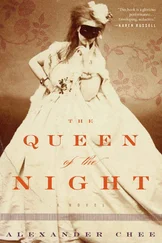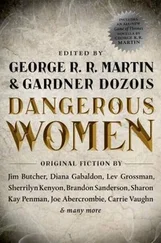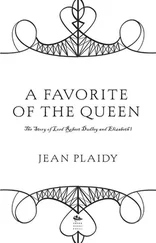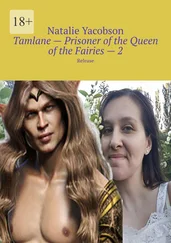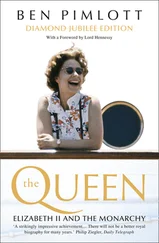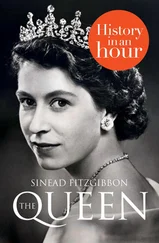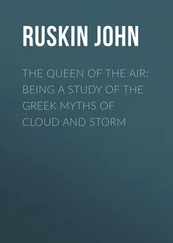Elizabeth carried a photograph of her fiancé and kept a steady correspondence with him throughout the trip, recounting their adventures. The princesses were enchanted by the beauty of southern Africa’s dramatic vistas, and amazed by the abundance of food and profusion of goods in shop windows compared to the deprivation in London. Sitting in an aerodrome in the Zulu territory, Lilibet and Margaret stared wide-eyed as five thousand half-naked warriors wearing loincloths, animal skins, beads, and feathers brandished their spears and shields, chanting and stomping in a great tribal dance. The princesses gaped at Victoria Falls, marveled at wildlife in the Kruger National Park, hiked the trails in the Drakensberg mountains of the Natal National Park, and clipped the feathers off ostriches. Yet Elizabeth couldn’t help feeling “guilty that we had got away to the sun while everyone else was freezing,” she wrote to Queen Mary. “We hear such terrible stories of the weather and fuel situation at home.… I do hope you have not suffered too much.”
The royal party followed a relentless schedule, including thirty-five days on the “White Train” of fourteen air-conditioned railway carriages painted ivory and gold. Elizabeth watched her parents make their rounds, displaying lively interest as they endured endless receiving lines and tributes, taking in all manner of performances and celebrations. The strain of being on constant display—of feeling “quite sucked dry sometimes,” as her mother described it to a niece midway through the tour—she now saw firsthand. She witnessed her father’s short fuse when he was exhausted or tense, and her mother’s ability to still his “gnashes” with a deft touch on his arm. Either from some unknown underlying illness or the toll of his exertions, the King was visibly losing weight.
There were serious tensions in South Africa, a predominantly black country controlled by a white minority that was itself divided between the Afrikaners of mainly Dutch descent and the English-speaking population—the angry legacy of the nineteenth-century Boer wars in which the British brutally suppressed the Dutch settlers’ rebellions and created British colonies. In part, the royal family’s trip was an effort by the King to promote reconciliation and to support the prime minister, Field Marshal Jan Smuts, an Afrikaner educated in England.
As Smuts faced a general election in 1948, many Afrikaners felt he was too close to Britain and too sympathetic to blacks. While he opposed giving blacks political power, Smuts favored paternalistic policies to help improve their lives. The opposition Afrikaner National Party, however, advocated apartheid policies of racial separation and subjugation. The pro-apartheid extremists eventually prevailed over Smuts and his party, setting South Africa on an isolationist course for nearly half a century. Lilibet saw how onlookers at events were segregated by race, and she understood the political divisions among the whites. Her insights into the repressive policies in South Africa and neighboring Rhodesia later proved invaluable when she dealt with racial questions that threatened to tear apart the Commonwealth.
* * *
THE HIGH POINT of the journey for Elizabeth was her twenty-first birthday on April 21. South Africa celebrated her coming of age as a national holiday with military reviews, a ball in her honor, fireworks, and a necklace of twenty-one diamonds presented by Smuts. She marked the milestone with an eloquent speech dedicated to the young people who had shared her experience of the “terrible and glorious years of the second world war.” The address was written by Dermot Morrah, a historian sympathetic to the monarchy and an editorial writer for The Times , and polished by Tommy Lascelles, who thought it had “the trumpet-ring of the other Elizabeth’s Tilbury speech, combined with the immortal simplicity of Victoria’s ‘I will be good.’ ”
Reading the text for the first time brought Elizabeth to tears. While she hadn’t crafted the words she spoke, her emotional reaction explains why her delivery was so authentic, and why her sentiments still strike a powerful chord and define her to this day. Lascelles told her that if “200 million other people cry when they hear you deliver it … that is what we want.”
Her remarks, which were broadcast from Cape Town “to all the peoples of the British Commonwealth and Empire,” lasted six minutes. In a piping voice, she spoke of the Commonwealth countries as her “home,” and challenged her contemporaries to lift the “burden” from their elders who had “fought and worked and suffered to protect our childhood” and to take on the challenges of the postwar world. “If we all go forward together with an unwavering faith, a high courage, and a quiet heart,” she said, “we shall be able to make of this ancient Commonwealth … an even grander thing—more free, more prosperous, more happy, and a more powerful influence for good in the world.” This turned out to be her credo for the Commonwealth, and it took root during her three months in Africa, just as her father intended.
But it was her personal vow—“my solemn act of dedication”—at the end of her speech that became her north star. “I should like to make that dedication now,” she said with palpable feeling. “It is very simple. I declare before you all that my whole life whether it be long or short shall be devoted to your service and the service of our great imperial family to which we all belong.” Only the word “imperial” would fail to stand the test of time. With the imminent independence of India and restiveness in other British colonies, it was clear that the empire was coming to an end.
Lilibet did indeed coax “a lump into millions of throats,” including Queen Mary’s. “Of course I wept,” she wrote to Queen Elizabeth. The heiress presumptive had become the royal family’s fresh face for the future, “solid and endearing,” in the judgment of Tommy Lascelles, with “a healthy sense of fun” and an ability to “take on the old bores with much of her mother’s skill.” He observed that she showed “an astonishing solicitude for other people’s comfort; such unselfishness is not a normal characteristic of that family.”
By the standard measures, the Africa journey was a big success for the royal family, setting the seal on their image as a force for continuity, unity, and stability during uncertain times. They had made a great effort to see every corner of the region, stopping the White Train at remote villages, the princesses sometimes in their dressing gowns bedecked with jewelry to put on a good show. The crowds in cities and bush alike had been huge and enthusiastic, the press coverage overwhelmingly positive. After boarding the Vanguard at the end of April for the trip home, “we four” stood above the forward gun turret and waved as they listened to the crowds below singing what a newsreel announcer described as “songs of hope.” Lilibet would not return to South Africa until 1995, after the end of apartheid and the election of Nelson Mandela as president.
BACK IN LONDON, Philip had been working as an instructor at the Naval Staff College in Greenwich, and with the help of Dickie Mountbatten had secured his British citizenship in February 1947, giving up his title as H.R.H. Prince Philip of Greece. Since he had no surname, Philip decided on Mountbatten, the English version of his mother’s Battenberg. As it turned out, his naturalization was unnecessary, since all the descendants of Sophia Electress of Hanover, who included Philip, were automatically considered citizens of Britain.
The long-postponed engagement announcement came on July 9, 1947, followed by the happy couple’s introduction at a Buckingham Palace garden party the next day. Philip’s mother retrieved a tiara from a bank vault, and he used some of the diamonds to design an engagement ring created by Philip Antrobus, Ltd., a London jeweler. Several months later Philip was confirmed in the Church of England by the Archbishop of Canterbury.
Читать дальше

